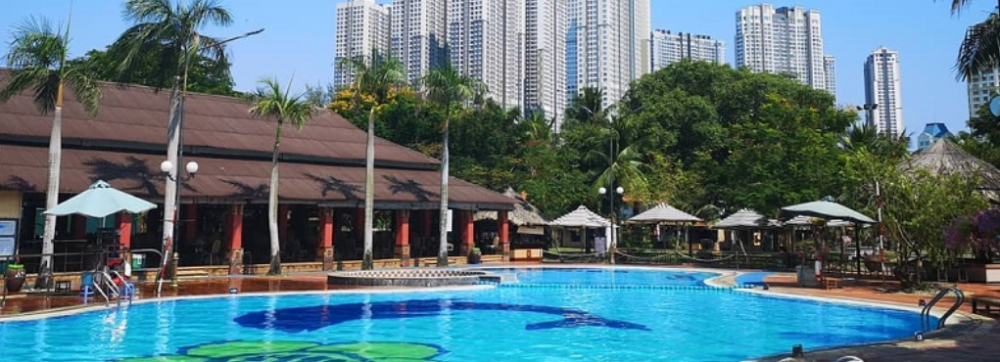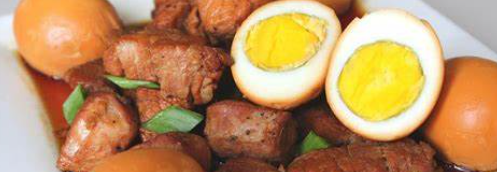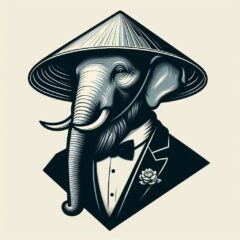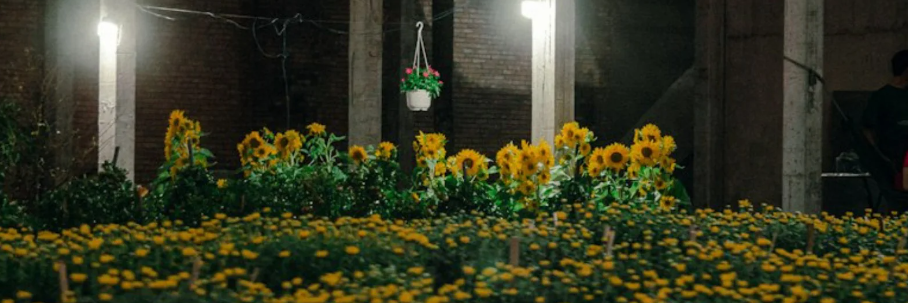TET In Vietnam 2024.
After living in Vietnam now for 16 plus years I think I am pretty qualified to let you know what TET is like in Vietnam.
From the firecrackers one year that sounded like machine guns (Or were they machine guns) to the cleaning of the house to appease the spirits, or the wife, to the utter boredom of eating pork and eggs until you hate pigs. lol.
This is what it is like over TET in Vietnam.
First What is TET?
You might have heard of the TET offensive, this is when the USA got their butt kicked.
Basically, with a bit of help from AI, this is what it was about. A mixture of butt-kicking and lunar new year.
The Vietnam War.
During the Vietnam War, the North Vietnamese forces launched a significant military operation known as the Tet Offensive against both the South Vietnamese and the Americans12. On January 31, 1968, the first day of Tet, the lunar new year, it started.
Over 100 South Vietnamese cities and outposts were simultaneously attacked. The goal of the offensive was to undermine American support for the war and incite a rebellion among South Vietnamese citizens.
And it worked. sadly so many good people on both sides died on this day and days before this. I am not trying to be flippant, but it was a terrible time for so many people. It is time we laid it to rest. I salute all.
Now All is Forgotten
Some of the older people remember the war, but Vietnam is predominately a young persons nation and they have forgotten and don’t care as much. But they are still respectful.
They are more interested in V-pop, K-pop, or Techno. Their aspirations are similar to Western culture however they are a lot more family-orientated.
This brings us to, what is it like now.
Vietnam TET 2024.

Now let us get into the good stuff. What is it like now and is Vietnam worth visiting over TET?
Yes and no. Let me explain.
When is TET
It changes with the lunar new year so even the kids do not know. And I am not sure if the adults do as well, lol.
But generally, it is in the first or second week of February. I’ve been here so long and still do not know the exact date, damn I am becoming Vietnamese.
What is TET About?
TET is generally about family but there are traditions you need to abide by. For example, wait till you are invited to see someone as it is important who walks through the door first. If you are not invited and just roll in, then it may be viewed as bad luck for the hosts.
And don’t sweep the dirt out of the house on TET because you will be sweeping out money. Love that, another excuse not to clean the house.
TET starts slow as everyone prepares and buys food and flowers. Much like the pictures above. And the video below.
A year or so ago, but the same stuff, damn almost said Krap.
When you do get to someone’s house, what do you do? Drink beer (Don’t pass out) , and wine and eat an enormous amount of food. When drinking you will commonly hear Morb, hai, ba YO. Which is basically 1,2,3 ..drink. And you might hear something that sounds like “chum a chum”, which means drink your whole glass of beer.
This is a Normal TET for me.
Tomorrow we start with this healthy stuff. I promise it will go downhill from here.
A swim, yippee.

Location: You’ll find it at 48/10 Dien Bien Phu Street, Ward 22, Binh Thanh District.
Operating Hours: The pool is accessible to the public from 6 a.m. to 8 p.m
Entrance Fees:
Weekdays (Monday-Friday):
Adults: VND 70,000
Children: VND 40,000
Weekends (Saturday and Sunday):
Adults: VND 80,000
Children: VND 50,000
What Is My Plan?
 Drugs, sex, and rock-n-roll, NO, I can’t say that.. let’s be serious…
Drugs, sex, and rock-n-roll, NO, I can’t say that.. let’s be serious…
Back to normality, we need to take the kids home first.
No Teaching for 2 weeks is a bonus so what is next….hehe…
Next is… Reality
A more family-orientated activity.
Clean the House.
Everyone goes on a cleaning binge and wash the floors, take down and wash the fans and if it is dirty…it gets cleaned.
This is the one time everything is spotless. I try to hide and drink beer all day and pretend I am working on my website.
Pork and Eggs
If you have been in Vietnam for longer than two TET holidays you will know about “pork and eggs”. It is a staple food source over these holidays and the first year I spent with my Vietnamese family I ate it for 5 days straight.
To say I am over it is an understatement. This is what it looks like.
 Buying Flowers
Buying Flowers
Buying some flowers. everyone must spend money on flowers to leave outside their doors.
Here are 7 of the most popular flowers used during Tet in Vietnam, with their Vietnamese names and meanings:
- Apricot blossom (Hoa Mai): A symbol of spring and the Lunar New Year, apricot blossoms are often used to decorate homes and businesses during this time. They are believed to bring good luck and prosperity in the coming year.
- Peach blossom (Hoa Đào): Another symbol of spring, peach blossoms are also associated with beauty and love. They are often given as gifts during Tet to express good wishes for the new year.
- Kumquat tree (Cây Quất): Kumquat trees are small, citrus trees that are often decorated with red kumquats during Tet. They are believed to bring good luck and prosperity, and they also symbolize wealth and abundance.
- Daisy (Cúc Mẫu Đơn): Daisies are a popular choice for Tet decorations because they are simple and elegant. They are also associated with purity and innocence, which are qualities that are valued during the Lunar New Year.
- Marigold (Cúc Vạn Thọ): Marigolds are often used in religious ceremonies and are a symbol of good luck. They are also believed to ward off evil spirits, making them a popular choice for Tet decorations.
- Orchid (Hoa Lan): Orchids are considered to be a symbol of elegance and sophistication. They are often given as gifts during Tet to express good wishes for the new year.
- Chrysanthemum (Hoa Cúc): Chrysanthemums are associated with longevity and happiness. They are often used in Tet decorations to bring good luck and prosperity to the home.
These are the favorites and normally sit outside the gates of the house to the left or right. And they are never stolen, although I have been tempted. After TET most are thrown away apart from the very expensive ones which are then sometimes sent back to a farm to look after.
TET Superstitions.
TET is accompanied by some superstitions and traditions believed to bring good luck and ward off bad fortune. Here are some common superstitions observed during the TET holiday in Vietnam:
Cleaning before TET.
It is believed that cleaning the house before TET can sweep away the bad luck of the previous year and make room for good fortune in the coming year. However, cleaning during the TET period itself is avoided, as it is believed to sweep away the good luck.
Avoid black and white clothing.
Wearing black or white clothes during TET is considered inauspicious, as these colors are associated with mourning and funerals in Vietnamese culture. Instead, bright and vibrant colors, especially red and yellow, are preferred to attract good luck and prosperity. Although this is now considered old fashioned with younger people.
Money and giving lucky envelopes.
It is customary to exchange red envelopes, known as “lì xì” or “mừng tuổi,” during TET. These envelopes contain lucky money, which is believed to bring good luck and blessings for the new year. New money is best to give with fresh crisp notes.
Avoiding borrowing and lending.
Vietnamese people believe that borrowing or lending money during TET can bring financial difficulties in the coming year. It is considered better to settle any debts before TET and avoid engaging in monetary transactions during the holiday period.
Firecrackers and loud noises.
Firecrackers used to be a common part of TET celebrations in Vietnam, as the loud noises were believed to scare away evil spirits and bad luck. However, due to safety concerns, firecrackers are now largely prohibited.Apart from a couple of years ago when someone in my area set off firecrackers that sounded like a machine gun. Damn.
First visitor of the year.
The first visitor to a house after midnight on New Year’s Eve is considered significant. The belief is that the first guest can determine the luck and prosperity of the household for the entire year. Usually, a respected and successful person is chosen as the first visitor to bring good fortune.
These are just a few examples of the many superstitions and traditions associated with TET in Vietnam. So was I lucky this year. Read below.
What Happened to Me this TET.
All my good intentions of going to District 1 to look at the flowers and walk around and video for this blog went out the window. How did this happen?
My Vietnamese wifes friend invited us to her shop to drink beer and eat. The food was amazing and the company was great. My wifes boyfriend is a policeman and a big drinker and a big guy. Also very funny.
Unfortunately after drinking about 15 beers, he brought out the whisky. It laid me low for 3 days. but this is what happens over TET and you have to roll with the flow.
All in all, I did have a great TET but did miss out on the flowers in District 1. Walking around with thousands of others….hmmm.
If You Were in Hanoi
You would have seen this amazing show. The video is a live drone show in Hanoi during the New Year festival, showcasing a spectacular display of drones in a 4K60 HDR format. Amazing.
And in Ho Chi Minh City
And if you were in Ho Chi Minh City, this is what you would have seen.
Hanoi is the capital and there is also some leftover animosity so I am sure the funding is not the same.
However, every city and town has its own TET celebrations and each is special in its own way.
Final Words
I hope you liked a look at what Vietnam has to offer and the experiences you can have if you come here to work as a teacher.
So is TET fun and a good time to visit? Vietnam is never boring but be prepared for a lot of shops to be closed over the official TET holiday.
Steve 
Any or all links on this site may be affiliate links, and if you purchase something through those links I will make a small commission on them.
There will be no extra cost to you and at times due to my affiliation, you could actually save money.
You can read our full affiliate disclosure here.



